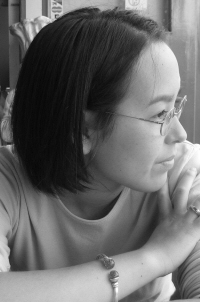Today under the spotlight: PETER CROWTHER, whose story "Gandalph Cohen and the Land at the End of the Working Day" appears in The Alchemy Press Book of Ancient Wonders.
Tell us a little
about yourself, and what you like to write?
My real weakness in reading is horror and ghost stories and
the kind of SF stories that are filled with awe and wonder ... such as
Bradbury, for example. Stephen King is the main man for me simply because of
his characterisation. Sure, the stories are good -- well, there's an occasional
so-so one but, with the sheer quality of his writing, you can pretty much
forgive him anything -- but it's the depth of detail in his backgrounds as well
as his foregrounds that puts the guy above anyone else writing today. And just
to set my stall fully out, I've read several thousand books ... with faves
being the late Robert B Parker, early Updike, Richard Ford, all the classic SF
and horror books (and I do mean all),
stuff like Wodehouse, early pulps (Prather, Thompson, Goodis and so on),
Fitzgerald and on and on and on. What do I like to write? Pretty much the same
as what I like to read. I wrote a story called “Tomorrow Eyes” simply because I
really wanted to write something Runyonesque, a story called “The Incredible
Multiplicity of PhaedraLament” because I wanted to emulate Clarke's White Hart, and so on. So I guess it's
the attraction of speaking in a specific voice that attracts me.
What inspired you to
write “Gandalph Cohen and the Land at the End of the Working Day”?
I loved Spider Robinson's tales set in Callaghan's Crosstime
Saloon and I've long fancied having my own barroom for the telling of tall
tales. “Gandalph Cohen” was the first of them; there are three more, each of
them following the same formula ... Jack Fedogan playing jazz on the bar's PA
system, the regulars sitting around a table chewing the fat or telling jokes,
and a stranger coming into the bar with a “story” to tell or re-enact. There's
a nice story concerning these stories and Dave Brubeck ... but I don't want to
bore you so I'll tell it another time. Catch me at a convention and ask me
about it sometime.
If the TARDIS could
drop you off to any one site in its heyday, where would you go?
I've always wanted to go back to the late 1950s and go knock
on the door of our old house (I was born in 1949, 4 July). I love the idea of
my mom or dad opening the door and asking if they could help me while, behind
them, this wide-eyed nosy kid stands watching me from behind them, an open book
or comic hanging from his hand. And I'd like to go to a US city of that period,
with a wad of dollars in my pocket so that I could buy copies of great comic books
for just a dime apiece. I wrote a story along these lines called “The Doorway
in Stephenson's Store” -- if you read it then please do bear in mind that it
was written and published some five years before Stephen King unveiled 11.22.63.
What appeals to you
most about ancient sites/landscapes?
Just seeing the way things used to be. Rightly or wrongly, I
am fascinated by (and attracted to) the past. Can't get enough of it.
What do you have
coming out next?
Just a few stories here and there, and then my long-threatened
mainstream novel Thanksgiving ...
currently standing at 110,000 words and waiting for the final spurt…
[Peter Crowther is the recipient of numerous awards for
writing, editing, and as publisher of the hugely successful PS Publishing (which
includes Stanza Press, the Drugstore Indian mass market paperbacks, PS Visual
Entertainment and PS Art Books). As well as being widely translated, his short
stories have been adapted for TV on both sides of the Atlantic, and collected
in The Longest Single Note, Lonesome
Roads, Songs of Leaving, Cold Comforts, The Spaces Between the Lines, The Land
at the End of the Working Day and the upcoming Jewels in the Dust. He is the co-author (with James Lovegrove) of Escardy Gap and The Hand That Feeds, and has also written the Forever Twilight SF/horror cycle. He lives and works with his wife
and business partner Nicky Crowther on England’s Yorkshire coast.]
Photo (c) Peter Coleborn





